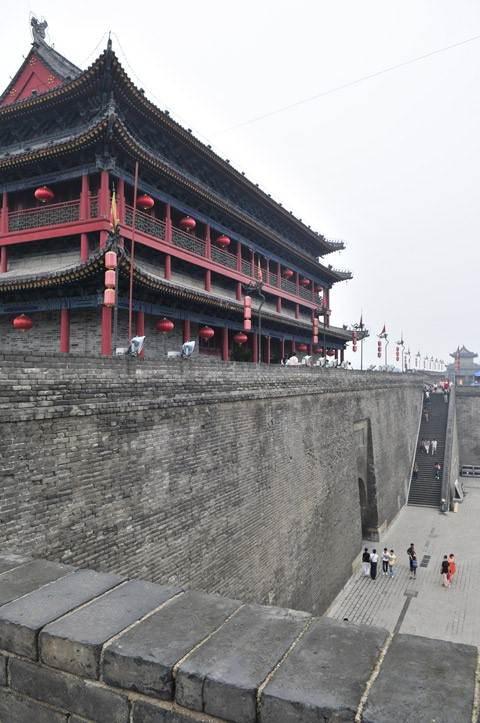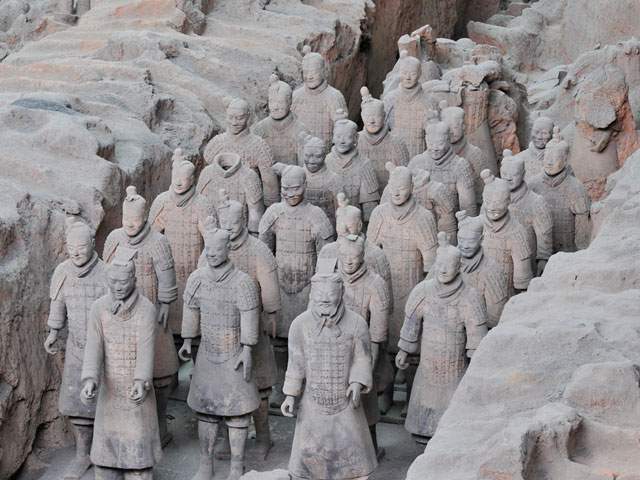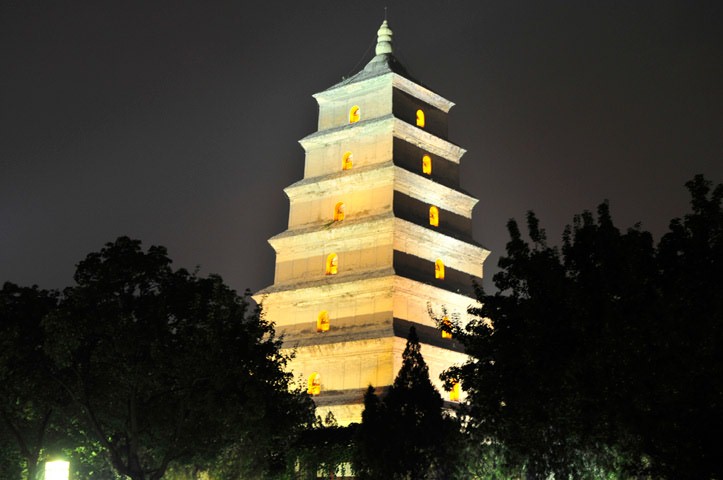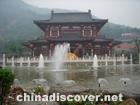Bell Tower
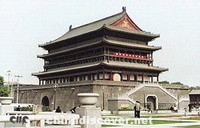
Overview
In the downtown area of Xi'an at the intersection where the North, South, East and West Streets meet, stands a magnificent classical building, with carved beams and painted rafters. It is known as the Bell Tower. It has gained its name from the function it used to perform, to tell the time in the morning. Ever since its establishment, the tower has become the symbol of Xi'an. Now it is a historic monument in Shaanxi Province.
Know more
The Bell Tower was first built in 1384, in the Yingxiang Temple which used to be located in the center of the city. The tower was moved to its present place in 1582 as a result of the city's expansion program.
There have been various legendary tales about the Bell Tower. In the Ming Dynasty, tens of thousands of people were killed in several earthquakes on Central Shaanxi Plain. People said that a gigantic dragon in the huge undercurrent that flowed beneath the city caused all those quakes. When the governor of the city heard this, he ordered all the smiths in the city to make a chain 300 meters long to chain the dragon at the bottom of the undercurrent, right in the center of the city. He then ordered 5,000 skillful craftsmen to build the tower over the place where the dragon was chained so that it would be weighed down to the bottom of the undercurrent forever, and to stop forever, its evil spells.
The tale may sound absurd; however, it is not without reason. The first emperor of the Ming Dynasty was born into a poor family. His parents died when he was young. He had to work as a shepherd, herding sheep for the rich landowners. Later, he went to a temple and became a monk. When he ascended the throne, he was afraid of being deposed by someone of "real dragon" (i.e. royal descent). Therefore, he ordered bell towers to be built all over the country to repress the "dragon spirits". Xi'an has been the site of imperial capitals ever since ancient times. Just as popular then as now, the saying that the "dragon spirits" must be running rampant here comes from this belief. This made Zhu Yuanzhang, the Emperor, all the more afraid. Therefore, the Bell Tower in Xi'an was not only built earlier, but also taller than the other ones in the country.
Must see
The square-shaped base of the tower occupies an area of 1,337.4 square meters and is 8.6 meters high and 35.5 meters wide. The base was completely laid with blue bricks. The building proper is a mixed structure of bricks and wood, and it is 36 meters high. Three storeys of eaves are seen from the exterior of the buildings. The interior of the building is only two storeys. The eaves are supported by colorful dougong -- a unique Chinese architectural style of brackets inserted on the top of columns and crossbeams. They not only made the whole building firm, but also look artistic. In fact, the dougong architecture has a long history, dating far back to the Shang Dynasty (1600-1100 B.C.). A comparatively complete design of dougong can still be seen, from the engravings on bronze wares dating back to the Warring States Period (475-221 B.C.).
Since 1949, the Municipal Government of Xi'an has launched three repair programs on the tower. As a result, the tower now looks as great and magnificent as when it was first built hundreds of years ago. Today, if you climb the tower by way of its wooden stairs, you will command an extensive view over the whole city. If you are lucky to go on a fine day, your eyesight might reach as far as Zhongnan Mountain in the far southern suburb of the city.
